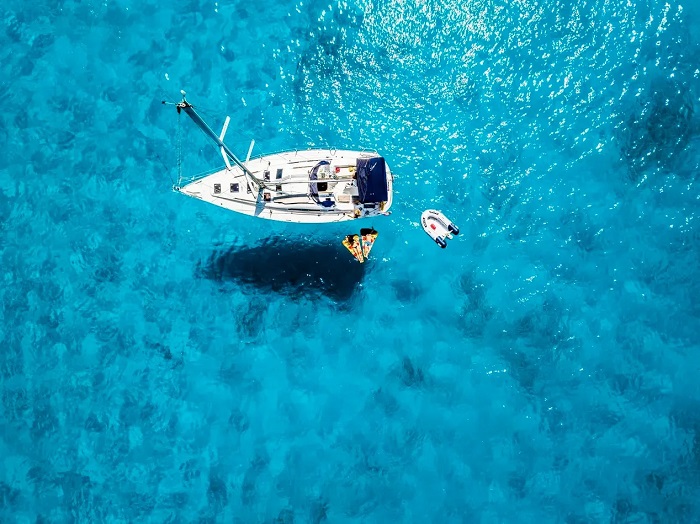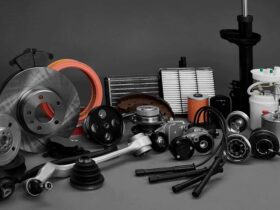The reliability of rope clamps and copper sleeves is crucial in vessel rigging.
When it comes to securing, joining, or adjusting wire ropes on a boat, two small yet vital components make all the difference — wire rope clamps and copper sleeves. These aren’t just bits of hardware; they’re the backbone of every reliable rigging setup, ensuring safety, strength, and durability in marine environments. Whether you’re managing sail lines, securing lifelines, or setting up custom rigging, knowing how and when to use these fittings is essential.
What Are Wire Rope Clamps and Copper Sleeves
Wire rope clamps, also known as cable clamps or clips, are mechanical fasteners used to hold the loose end of a wire rope loop back to the main rope body. They consist of a U-bolt, a saddle, and two nuts. Their main function is to create a secure loop or termination at the end of the rope without permanently altering it.
Copper sleeves, in contrast, are crimped fittings used for permanent terminations. These are pressed onto the wire rope using a swaging tool to form a tight, long-lasting connection. They’re often chosen when corrosion resistance, compact design, and professional finishing are required.
The biggest difference between them is flexibility. Wire rope clamps can be removed and reused, while copper sleeves are permanent. Knowing which to use depends on your application and how often you expect to adjust or replace the rigging.
Why Wire Rope Clamps and Copper Sleeves Matter in Marine Applications
Marine conditions are harsh — saltwater, UV exposure, and constant movement can wear down even strong materials. This is why boaters rely on marine-grade wire rope clamps and copper sleeves made from stainless steel or copper-nickel alloys. These materials resist corrosion, maintain strength under tension, and handle long-term exposure without weakening.
In boating, these fittings are commonly used to:
- Secure lifelines and guardrails
- Attach rigging and mast stays
- Connect anchor lines or mooring ropes
- Support bimini tops and covers
- Create loops for towing, lifting, or winching
Without reliable wire rope clamps and copper sleeves, the integrity of your entire system can fail — and out at sea, that’s not an option.
Types of Wire Rope Clamps
U-Bolt Clamps
The most common and versatile option. A U-shaped bolt fits over the wire, with a saddle and nuts to tighten it. Ideal for general marine applications, easy to install and adjust.
Fist Grip Clamps
Stronger and more durable than U-bolts. They use two bolts and a heavy-duty frame, providing a more secure grip on the rope. Perfect for high-load applications such as towing or mast rigging.
Double-Saddle Clamps
Feature two saddles for even clamping pressure on both sides of the rope. These are used where minimizing rope deformation is important.
How to Install Wire Rope Clamps Properly
- Determine how many clamps you need — typically three or more for marine use.
- Place the first clamp near the end of the rope loop with the saddle on the live end.
- Tighten the nuts evenly using a torque wrench to manufacturer specifications.
- Add the remaining clamps, spacing them evenly apart (about six rope diameters).
- Recheck and retighten after load testing.
A key rule to remember: “Never saddle a dead horse.” That means always place the saddle on the live end of the rope, not the tail end. This ensures proper load distribution and prevents slippage.
Copper Sleeves: Permanent, Professional Strength
Copper sleeves (also called ferrules) are designed for clean, permanent wire terminations. They’re used by professional riggers and serious boat owners who want a compact and polished connection.
Benefits of Copper Sleeves
- Corrosion-resistant and long-lasting
- Compact and lightweight
- Provides a clean, professional finish
- Maintains rope integrity under heavy tension
How to Use Copper Sleeves
- Slide the sleeve onto the rope.
- Loop the rope back through to form the desired eye or connection.
- Use a swaging tool to compress the sleeve tightly.
- Inspect for proper compression — the sleeve should be firm, with no sharp edges.
Copper sleeves are ideal for lifelines, halyards, and stays where strength and appearance matter. They’re not adjustable, so they’re best for setups you don’t plan to modify.
Choosing Between Wire Rope Clamps and Copper Sleeves
Use wire rope clamps when:
- You need an adjustable or temporary connection.
- You want to easily remove or replace sections of wire.
- The setup may change frequently.
Use copper sleeves when:
- You need a clean, permanent termination.
- You’re working on critical load-bearing connections.
- You want corrosion-resistant, professional-quality finishes.
Maintenance and Inspection Tips
Even the best wire rope clamps and copper sleeves need regular checks. Inspect for rust, deformation, or slippage. Replace any worn-out fittings immediately. Apply a marine-grade lubricant on stainless parts to reduce corrosion buildup. After long trips, tighten clamps and visually inspect sleeves for cracks or fraying.
Final Thoughts
Both wire rope clamps and copper sleeves are essential for every boat owner who takes safety and reliability seriously. Clamps offer flexibility for adjustments, while sleeves deliver professional, permanent results. Choose based on your needs — but always go for marine-grade materials, correct installation, and regular maintenance.
In 2025, where boating innovation meets tougher conditions and higher expectations, understanding how to use wire rope clamps and copper sleeves correctly is what separates a solid rig from a risky one. Smart boaters don’t cut corners — they secure them.














Leave a Reply